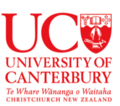The Health Intranet of Things
The delivery of Healthcare is an information intensive business, where value is maximised when information is shared. The Health Sector in New Zealand is incredibly complex, which makes sharing of information difficult and prone to error. It consists of some 12,000 organisations spread over around 15,000 sites and involving over 123,000 people to support over 4 million potential patients. Safely sharing information in this environment is highly challenging.
The first steps in the journey to enable the safe sharing of information were implemented at the end of the last decade, with the development of Connected Health. Connected Health is both a commercial and technology framework, which enables accredited telecommunication service providers to provision a Network of Networks, which together form a secure Health Intranet. Under-pinning the Connected Health environment is an Authentication and Authorisation framework based on the National Health Index (NHI) for patients and the Health Practitioner Index (HPI) for health practitioners.
Consolidating the large number of localities for storing health information into a small number of consistent Clinical Data Repositories (CDRs) is another key step in the journey towards safe sharing of health information. The aggregations of CDRs, which are geographically distributed and interconnected, using Connected Health, form a Private Cloud for health information. This information can be accessed by any authorised party, within the health system, including consumers’, who can access their own information.
The next step in this journey involves the connection of any device which measures any attribute of a patient’s bodily functions and stores the collected information in a consistent manner into the CDRs. The information so collected can enable the collaborative delivery of patient care between the right clinicians in any care setting. This step of the journey is only now emerging, but could be the most significant step of all, in that it enables the formation of a Health Intranet of Things. In this world view, technology is used to supplement and complement the delivery of integrated care to patients in a coordinated and continual basis, with the best human intervention being applied only when required.
Dr Milner spent most of his 40 years in the ICT industry in Telecom New Zealand, rising to become the Chief Technology Officer for Telecom, during the first half of the last decade. In this role, Murray championed the transformation of the New Zealand Telecoms environment into a high performance IP network offering leading edge services throughout the country.
Murray now runs a busy consulting practice in New Zealand and works extensively with central government, local government and enterprises on ICT strategy, economics and infrastructure development. He has been advising on the Connected Health program for over five years. He is also currently Chair of the National Health IT Board and a member of the National Health Board and through these positions is keen to help achieve substantial improvements in ICT capability to the benefit of health care within New Zealand.
One of the infrastructure areas that Murray has taken a particular interest in recent years is the deployment and use of fibre based capability to improve the performance of broadband services within New Zealand. In this regard, he has had associations with several regional fibre companies and is currently a Director of Crown Fibre Holdings Limited and Enable Networks Limited, both of whom are partners for the execution of the Government’s Ultra Fast Broadband initiative across urban New Zealand.
Murray travels extensively as part of his work and brings an international perspective, including both technology and economic benchmarks to his consulting practice, to complement his extensive experience in New Zealand. He also has direct links with University research into the performance optimisation of broadband and IP networks and is guiding the development of leading edge tools for this purpose in his role as Chairman of Harmonic Aotearoa Limited. His role as IPv6 Convener for the New Zealand IPv6 Task Force complements these activities.
Murray is widely recognised within his profession for his leadership in ICT development in New Zealand, including being presented with the Chairman’s award by the Telecommunications User Association of NZ (TUANZ) in 2005. He has been awarded Fellowships to work and study in both the UK and USA during his career. He is a Fellow of IPENZ, an active member of IET and IEEE and is on the editorial panel for the Telecommunications Journal of Australia.




